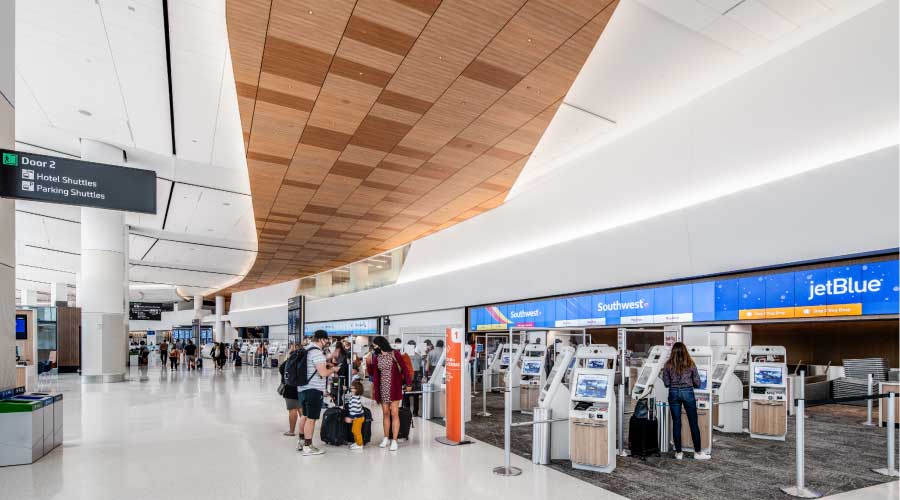FMs Can Roll Out LEED-EBOM Across the Campus
Without question, LEED for Existing Buildings: Operations and Maintenance (LEED-EBOM) is challenging. And for Andy Coghlan, it's even more so — indeed, Coghlan has an enormous task. As the sustainability specialist for the University of California's Office of the President (UCOP), Coghlan helps coordinate efforts on 10 campuses in the University of California system as they develop and implement sustainability strategies to keep the nation's largest college system on the cutting edge of sustainable operations.
UC's 10 campuses are made up of over 17,000 acres of land, serving 400,000 students and staff. They include 5,755 buildings encompassing 122 million square feet. Recently, the UC system has instituted a goal of LEED-EBOM Silver certification on campus buildings over 50,000 square feet (except for "acute and patient care buildings, and buildings scheduled for demolition or major renovations").
The UC system understands LEED, and EBOM specifically — by the end of 2010, five campuses had about 50 LEED-certified buildings under various versions of the rating system, with many more in the pipeline. The UCOP's own office was certified under the LEED-EB system in 2007. So Coghlan's problems aren't technical sophistication or even selling sustainability to his campuses; it's more an issue of implementing LEED-EBOM at scale, given severe budget and staffing constraints.
It's a process on which Coghlan and the rest of the UC campuses are hard at work to systemize.
Fortunately, they have help. The U.S. Green Building Council (USGBC) is well aware of the challenges campuses face in applying the EBOM rating system, and has been working diligently on the issue for the last several years.
LEED-EBOM is built around a fairly simple building model. The design of the rating system was historically based upon — although by no means limited to — an owner-occupied commercial office building standing alone on its own piece of land, where property lines clearly demarcate boundaries of responsibility and operations.
That model is often tested from two distinct directions — when that building is located on property shared with other buildings (as in a corporate office park) or when multiple distinct and unrelated (or partially related) tenants occupy a single building. Combine those challenges and multiply them times a dozen or more buildings and one can start to see the problem facing Coghlan and folks like him who are wrestling with certifying multiple buildings in the campus environment.
In a campus setting, buildings don't have natural property or even "project" boundaries. As one example, the landscaping between two laboratories at University of California, Davis isn't divided between those labs; it is functionally shared by both, and its management is handled by parties who do not occupy either building. In addition, those laboratories may each contain multiple departments, which also are spread across two or more additional buildings.
Adapting LEED-EBOM's strategies for campuses has been on USGBC's radar since the very beginning, when the Existing Buildings Pilot Program wrestled with buildings on campuses like Emory University and UC Santa Barbara, as well as the corporate campuses of Nike and Microsoft. These buildings made clear that a thoughtful approach to adapting the LEED suite of tools to campuses would be a game-changer.
"One of the reasons we started to work on a systematic campus approach is that lots of organizations that have made a commitment to LEED are scaling up," says Melissa Gallagher-Rogers, a LEED director with USGBC, who is leading efforts to create guidance for campus certifications. "There's no longer just one showcase building. They want EBOM certification on as many buildings as possible."
But to decide where campuswide performance and documentation could be helpful to projects and still maintain the integrity of the EB rating system, Gallagher-Rogers and her team had to first decide what things simply had to stay the same.
One thing that has to stay the same, regardless of whether the focus is on individual buildings or an entire campus: The driving principle behind LEED-EBOM remains performance at the building level.
"We still certify individual projects, but we look at the factors that lend holistically to the campus," says Gallagher-Rogers. "For EBOM, that's anything that is policy-based."
Although certifying campuses as a whole, or groups of buildings on a campus, may be a future goal, even that variation on LEED-EBOM will likely be predicated on understanding building-level performance for a core subset of prerequisites and credits.
USGBC's first step towards formally accommodating campuses, the 2010 LEED Application Guide for Multiple Buildings and On-Campus Building Projects (AGMBC), is consistent with that guiding principle. The AGMBC clearly signals USGBC's interest in testing the waters of campuswide credit compliance, but in a carefully measured and limited scope. The AGMBC introduces a platform called the "master site," by which campuses can submit a set of credits through a separate review process. The idea is to get pre-approval for all campus projects that later pursue LEED-EBOM certification. Credits identified for potential campuswide documentation, via the "master site" process, can be categorized in three general groups: geography credits, policy credits and systems credits.
One Policy, Multiple Buildings
Allen Doyle is a reasonable man. With more than 5,300 acres of campus and 5 million square feet in his portfolio as sustainability manager at the University of California, Davis, the UC system's largest campus both in terms of acreage and enrollment, Doyle understands the need for a measured approach to LEED for Existing Buildings: Operations and Maintenance (LEED-EBOM) certification. "If we can certify 400,000 square feet of building on this campus by 2013, we will be very satisfied," he says. "It's a lot of space, but on a campus this size, it's just a beginning."
UC Davis, like many university campuses, not only has dozens of buildings to consider, but a diversity of building types as well — many of them larger than 50,000 square feet. "We have everything from administrative buildings to performing arts halls to basketball gyms and dormitories," says Doyle. "One of our student rec centers actually shares a building with conference and meeting space. We have more than 1.6 million square feet of energy intensive laboratory space, and one of our hallmark laboratories has a cyclotron in the basement."
Doyle's challenge is not uncommon on campuses. Beyond the relatively common feature of a central plant, campuses often house research and development facilities, laboratories, production or manufacturing lines, health clinics, sports facilities, and data centers. This diversity can make the application of overarching sustainability policies difficult.
Adaptable Policies
Ensuring that sustainability strategies maintain flexibility and adaptability for diverse building types is critical. This may mean creating a lean set of blanket sustainability policies for the campus while planning on supplementing those policies with more detailed, building-specific implementation documents — one strategy the LEED Application Guide for Multiple Buildings and On-Campus Building Projects (AGMBC) suggests. The core contents of those blanket policies can be focused on the elements of performance that can be implemented campuswide; where buildings differ, the policy may leave room for building-specific information.
According to Melissa Gallagher-Rogers, a LEED director and leader of the group developing the parameters for the AGMBC, policies that apply to multiple buildings across campus is one of the major ways the AGMBC can help facility managers with LEED-EBOM certification, and save time and cost on certification fees to boot.
The AGMBC is intended to provide guidance to achieve two different efficiencies — the more efficient production of policy documents and the more efficient review of those documents after they have been submitted as part of the LEED-EBOM certification process.
When policies that require extensive building-specificity are under development, a blanket policy may end up being so thin as to come up short in the master site review process. But that doesn't mean efforts are wasted. If the multibuilding policy approach doesn't work for a given policy, a campus will still benefit if the facility manager can create a partial policy document, even one that is limited in scope, that establishes consistency in form, structure and as much content as possible. Although that policy will need to be resubmitted with each LEED-EBOM application, the facility manager's confidence in the policy will grow with each successful certification.
— Dan Ackerstein |
Related Topics:













